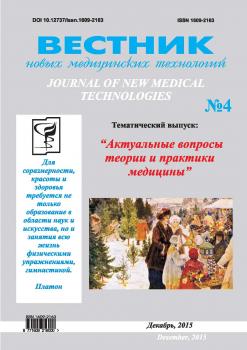Abstract. Introduction. Diabetes mellitus is one of the most common and socially important diseases in the world. The diabetic foot syndrome is one of the most complex diseases with a view to pathogenesis and one of the most serious complications of diabetes mellitus. This syndrome is characterized by disorders and changes of all structures of lower extremities, causes the ulcerous and necrotic processes. At the current moment, a traditional method in treatment of complications of the diabetic foot syndrome is amputation of lower extremities. Due to the large number of postoperative complications, the most preferable are economic amputations at the level of foot step. In modern conditions in the first stage of complex treatment of patients with purulent-necrotic process in the lower extremities, the recovery of main arterial blood circulation of the lower extremities in the form of open or endovascular angioplasty is effective. The most effective method is revascularization performed according to angiosomes areas of blood flow in footstep. Purpose of this study is to carry out a comparative assessment of the effectiveness of typical and atypical amputations at the level of footstep in patients with the most complicated course of the diabetic foot syndrome. Material. The objects of this study were patients with diabetes mellitus (DM) type 2 with purulent-necrotic complications of diabetic foot, treated at the surgical department department of the National N.I. Pirogov Surgical and Medical Center of the Saint- Petersburg of the SPb Clinical centre for the period 2010-2013. The main group included 68 patients. These patients were performed atypical interventions according to angiosomes blood flow to the tissues of the foot. Operative interventions at the level of footstep were carried out to 47 patients of the control group. Methods. An objective study to assess the local status, laboratory tests (clinical blood test, basic coagulogram, carbohydrate metabolism indexes) and duplex ultrasound study (USDI) of vessels of lower extremities were carried out. Obligatory angiography was performed in all patients. Surgical intervention in the form of dissection, drainage of purulent focus was carried out on an emergency basis prior to angiography only in patients with acute purulent processes in the lower extremities. In all other cases, the individual peculiarities of blood circulation disorder in lower extremities determined the choice of tactics of operative treatment. In 76% and 46% accordingly for each group after angiography, a balloon angioplasty was carried out for reconstruction of the main blood flow. Results and discussion. The average duration of the in-patient treatment in study group was 14,4±2,3. In the control group - 18,2±3,1. Duration of hospitalization differed significantly (p<0.05), but significant group of patients (31 and 18, respectively) were re-hospitalized during the period from 2 to 6 weeks after discharge from the hospital for the purpose of autodermoplasty for closure of surgical wounds. There were no significant differences between the postoperative healing time of wounds and wound surfaces after reconstructive interventions. This indicates the correct choice and method of operation, as well as indications for secondary wound closure. The authors note the difference in number of re-operations for recurrent purulent-necrotic process (2 patients in the study group and 9 patients in the control group). Re-operation was considered in the case of a destructive process to heal the original wound. Relapse necrotic phenomena was the main cause of the increase in terms of the impossibility of independent movement and 6.3±1,2 and 13.1±3.4 days, respectively (p<0.05). The authors explain these results by the fact that the leading role belongs to the qualitative blood circulation of paravulnar tissues in the postoperative wound healing in patients with diabetic foot syndrome. Conclusions. 1. Preoperative angiography is prescribed to patients with purulent-necrotic complications of diabetic foot syndrome. If required, angioplasty before performing surgery on the tissues of the feet. 2. The application of the principle angiosomes blood flow on the basis of the duplex ultrasound study (USDI) of arteries and angiography allows to choose the most rational tactics of surgical treatment. 3. The use of atypical technique of amputations in the foot after preoperative examination can reduce the number of postoperative complications and the duration of inpatient treatment, to improve postoperative mobility and difficulty walking patients.
diabetic foot syndrome, varicose vein disease of the lower limbs, lower limbs vein pathology.
Введение. Сахарный диабет (СД) является одним из самых распространенных и социально значимых заболеваний в мире. В настоящее время, по общемировой статистике, основанной на обращаемости к врачу, насчитывается 366 млн. человек, страдающих СД (порядка 7% населения всего мира), при этом около половины всех пациентов находится в трудоспособном возрасте. Учитывая быстрые темпы распространения этого заболевания, эксперты Всемирной Диабетической Федерации прогнозируют, что количество больных СД к 2030 г. увеличится в 1,5 раза и достигнет 552 миллионов человек, т.е. будет болеть каждый 10-й житель нашей планеты [3, 5].
Синдром диабетической стопы (СДС) - одно из наиболее сложных, с точки зрения патогенеза, и тяжелых осложнений СД. Данный синдром характеризуется патологическими изменениями периферической нервной системы, артериального и сосудов мик-роциркуляторного русла, явлениями остеоартропа-тии. На фоне данных комплексных изменений тканей нижних конечностей возникают язвеннонекротические процессы вплоть до гангрены [1,15]. В итоге при наиболее выраженных и распространённых процессах приходиться прибегать к максимально травматичным методам хирургического лечения -ампутациям нижней конечности. При этом леталь-





